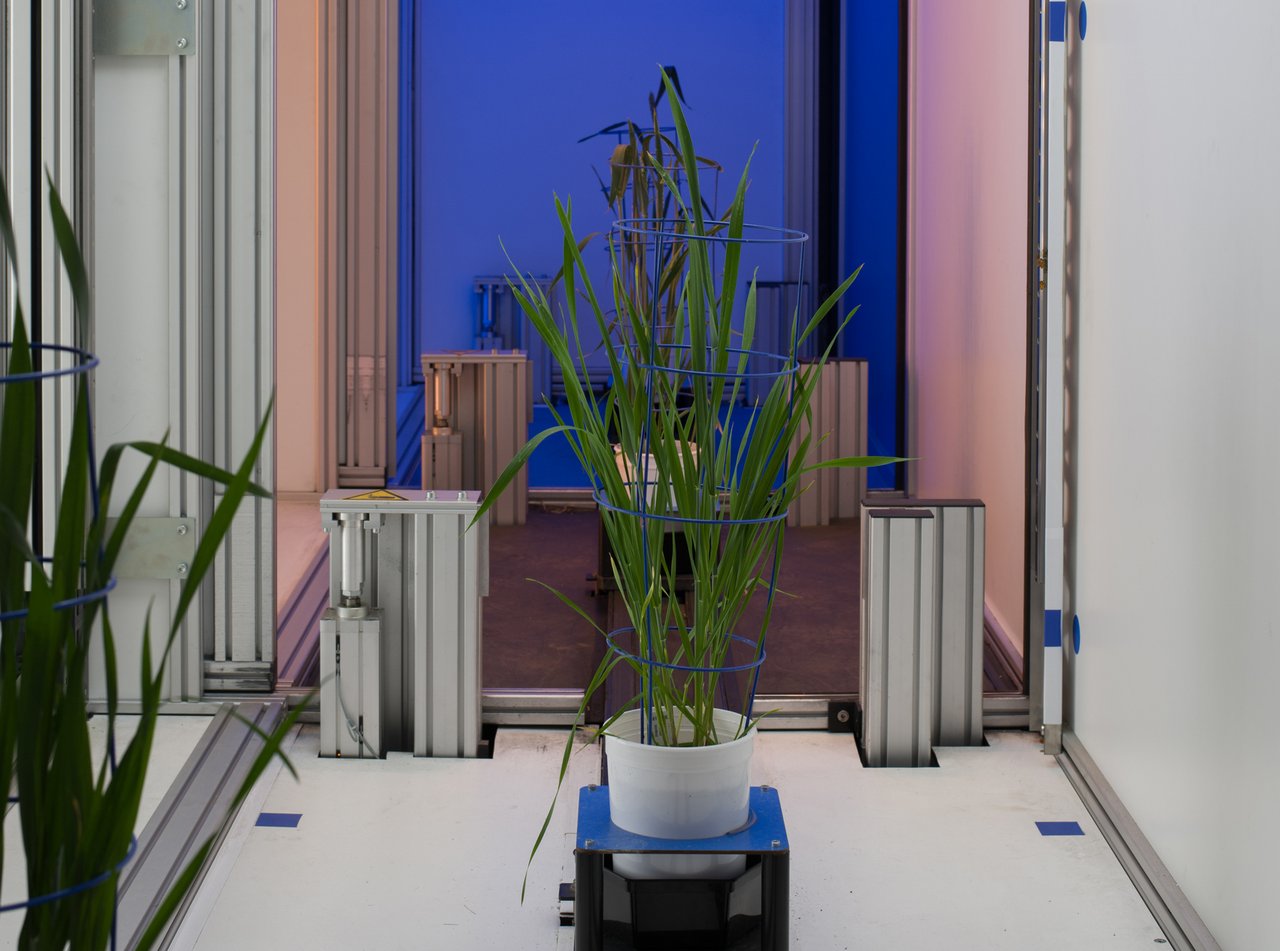Greenhouse Systems
Three high-throughput systems from Lemnatec are available for the phenotyping of plants, which have different capacities and size dimensions. They allow the investigation of small plant species such as Arabidopsis, as well as medium-sized species like cereals, up to large crop species such as maize. The small facility is located in a climate chamber where conditions are well controlled, the two larger ones are housed in climate-controlled greenhouses.
Three successive imaging chambers record the plants in the visible range (390-750 nm) and in the near-infrared range (1450-1550 nm) or detect the total fluorescence of the plants (excitation: 400-500 nm, emission: 520-750 nm). In all three facilities, there is also an LED camera panel for the automated recording of photosynthesis parameters according to the pulse-amplitude-modulated measuring principle. Stroke-rotation units in the recording chambers enable side view imaging from different angles. The plants are transported fully automatically to the image acquisition chambers, where they are recorded from top and from the side view and then are watered with water or a specific nutrient solution, depending on the experiment.
The small plant facility has a capacity of 384 transport carriers for the examination of a maximum of 384 (one plant per carrier in a single pot), 2304 (six plants per carrier in trays) or 4608 (twelve plants per carrier in trays) plants in one experiment. The medium plant facility allows 520 plants (one plant per carrier) to be studied simultaneously. The facility for large plants offers space for 396 (one plant per carriery) or a maximum of 1584 plants (four pots per carrier). In the small and large system, the non-invasive recording of root architecture characteristics is also possible. For this purpose, there are specially developed, bevelled pots that have a disc on the slope that is opaque to visible light, but where the roots growing along can be recorded by a near-infrared camera. In this way, the growth of root and shoot can be recorded simultaneously.
All captured images are "converted" into phenotypic features by conducting an automated image analysis. Thus, they yield information on the shoot architecture (plant height and width, projected leaf area from top and side view), the estimated (above-ground) plant biomass, colour values, pixel distribution in different colour classes, colour intensity, saturation, parameters related to the plant's moisture content as well as physiological features such as chlorophyll fluorescence. The root images also provide information about the root architecture (root area, root angle, root length).
More information:https://youtu.be/uPC5-Xb_ayg
